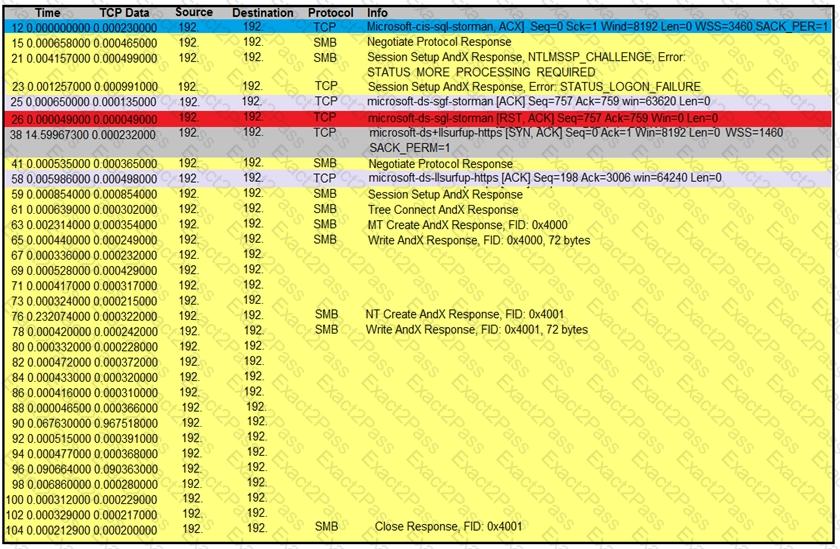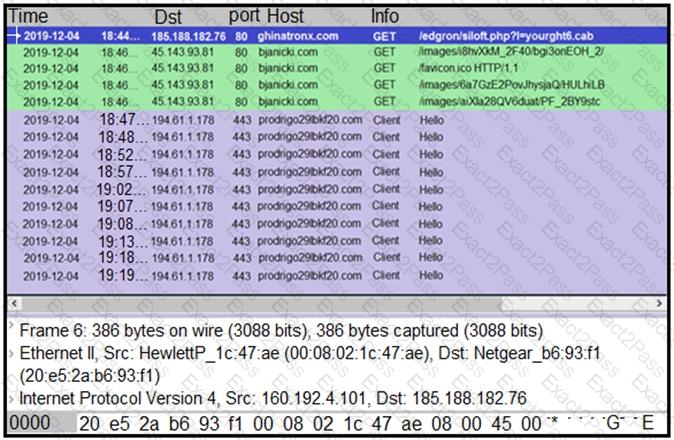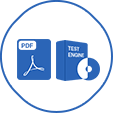Last Update 8 hours ago Total Questions : 115
The Conducting Forensic Analysis and Incident Response Using Cisco CyberOps Technologies (CBRFIR) content is now fully updated, with all current exam questions added 8 hours ago. Deciding to include 300-215 practice exam questions in your study plan goes far beyond basic test preparation.
You'll find that our 300-215 exam questions frequently feature detailed scenarios and practical problem-solving exercises that directly mirror industry challenges. Engaging with these 300-215 sample sets allows you to effectively manage your time and pace yourself, giving you the ability to finish any Conducting Forensic Analysis and Incident Response Using Cisco CyberOps Technologies (CBRFIR) practice test comfortably within the allotted time.
A security team detected an above-average amount of inbound tcp/135 connection attempts from unidentified senders. The security team is responding based on their incident response playbook. Which two elements are part of the eradication phase for this incident? (Choose two.)
Refer to the exhibit.

An engineer is analyzing a TCP stream in Wireshark after a suspicious email with a URL. What should be determined about the SMB traffic from this stream?
Which tool conducts memory analysis?
During a routine inspection of system logs, a security analyst notices an entry where Microsoft Word initiated a PowerShell command with encoded arguments. Given that the user's role does not involve scripting or advanced document processing, which action should the analyst take to analyze this output for potential indicators of compromise?
Refer to the exhibit.

A network engineer is analyzing a Wireshark file to determine the HTTP request that caused the initial Ursnif banking Trojan binary to download. Which filter did the engineer apply to sort the Wireshark traffic logs?
An incident response team is recommending changes after analyzing a recent compromise in which:
a large number of events and logs were involved;
team members were not able to identify the anomalous behavior and escalate it in a timely manner;
several network systems were affected as a result of the latency in detection;
security engineers were able to mitigate the threat and bring systems back to a stable state; and
the issue reoccurred shortly after and systems became unstable again because the correct information was not gathered during the initial identification phase.
Which two recommendations should be made for improving the incident response process? (Choose two.)
Refer to the exhibit.

A web hosting company analyst is analyzing the latest traffic because there was a 20% spike in server CPU usage recently. After correlating the logs, the problem seems to be related to the bad actor activities. Which attack vector is used and what mitigation can the analyst suggest?

